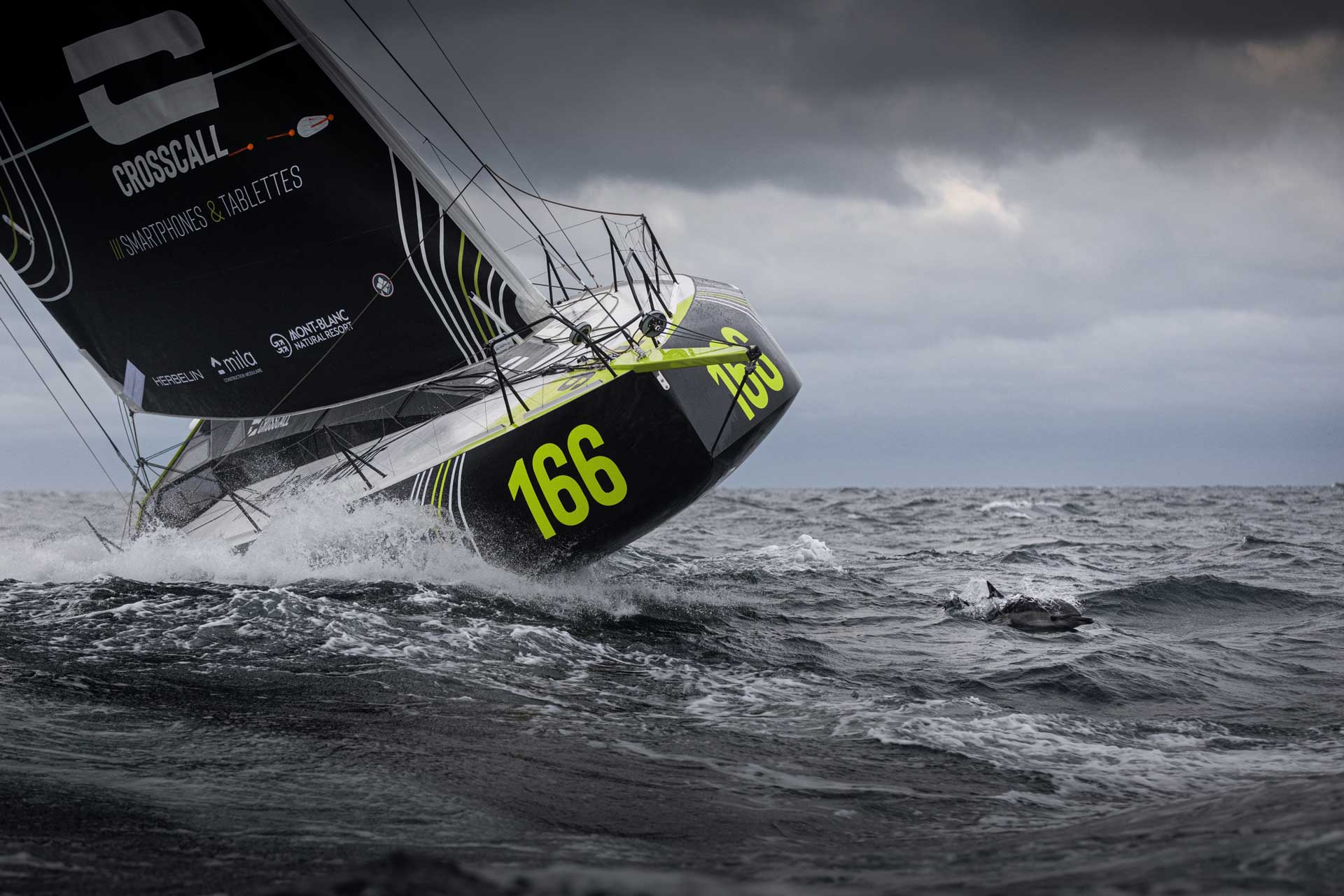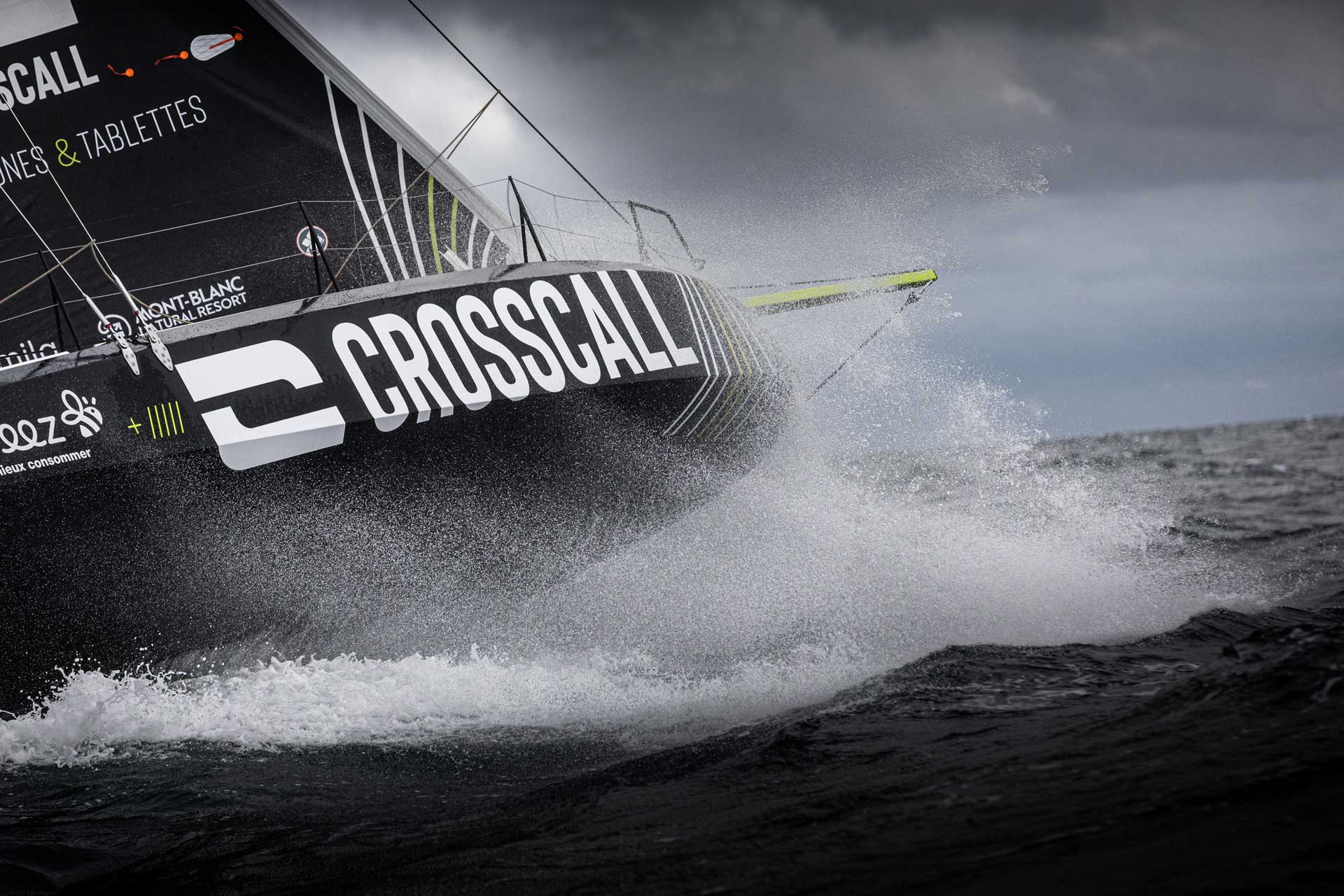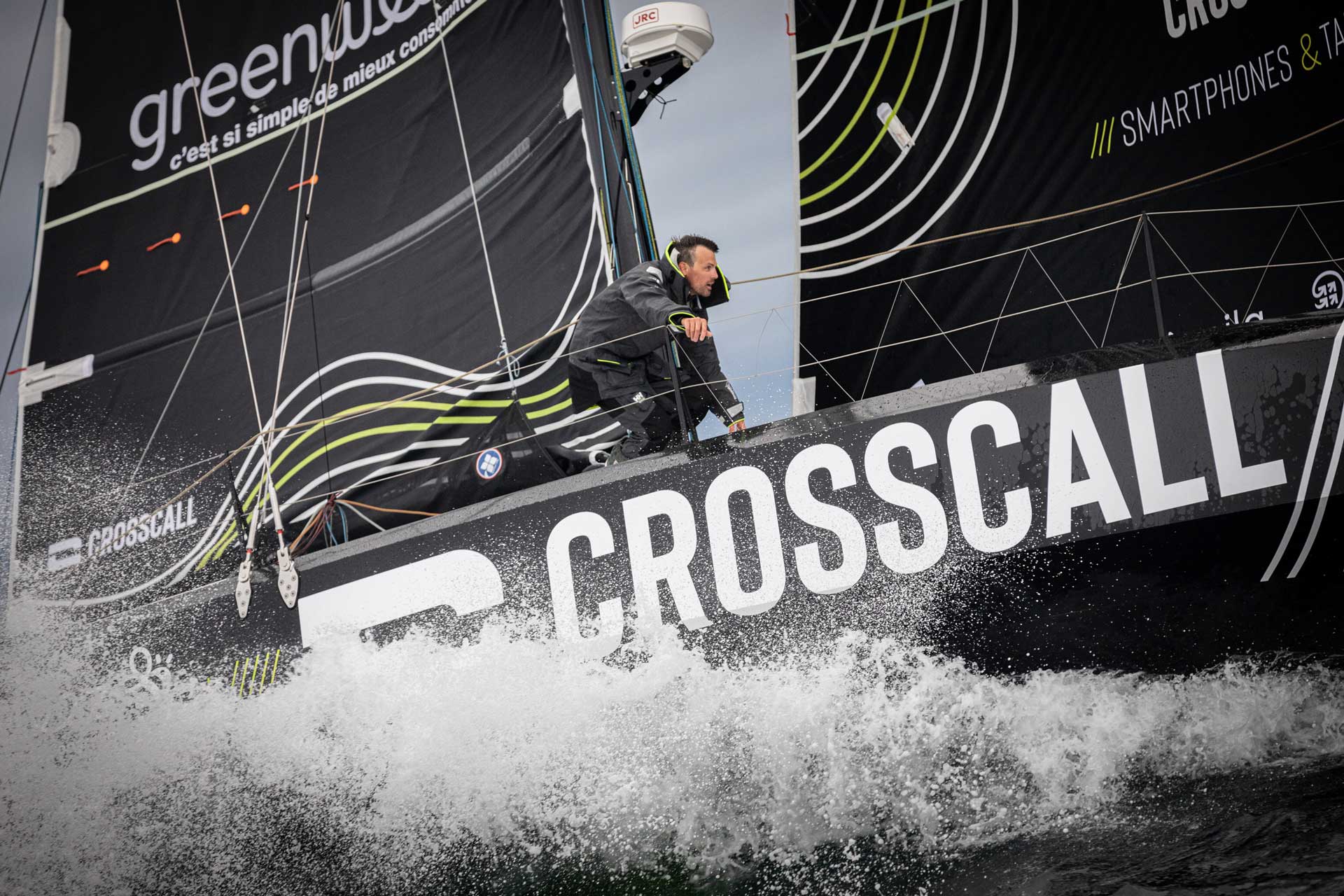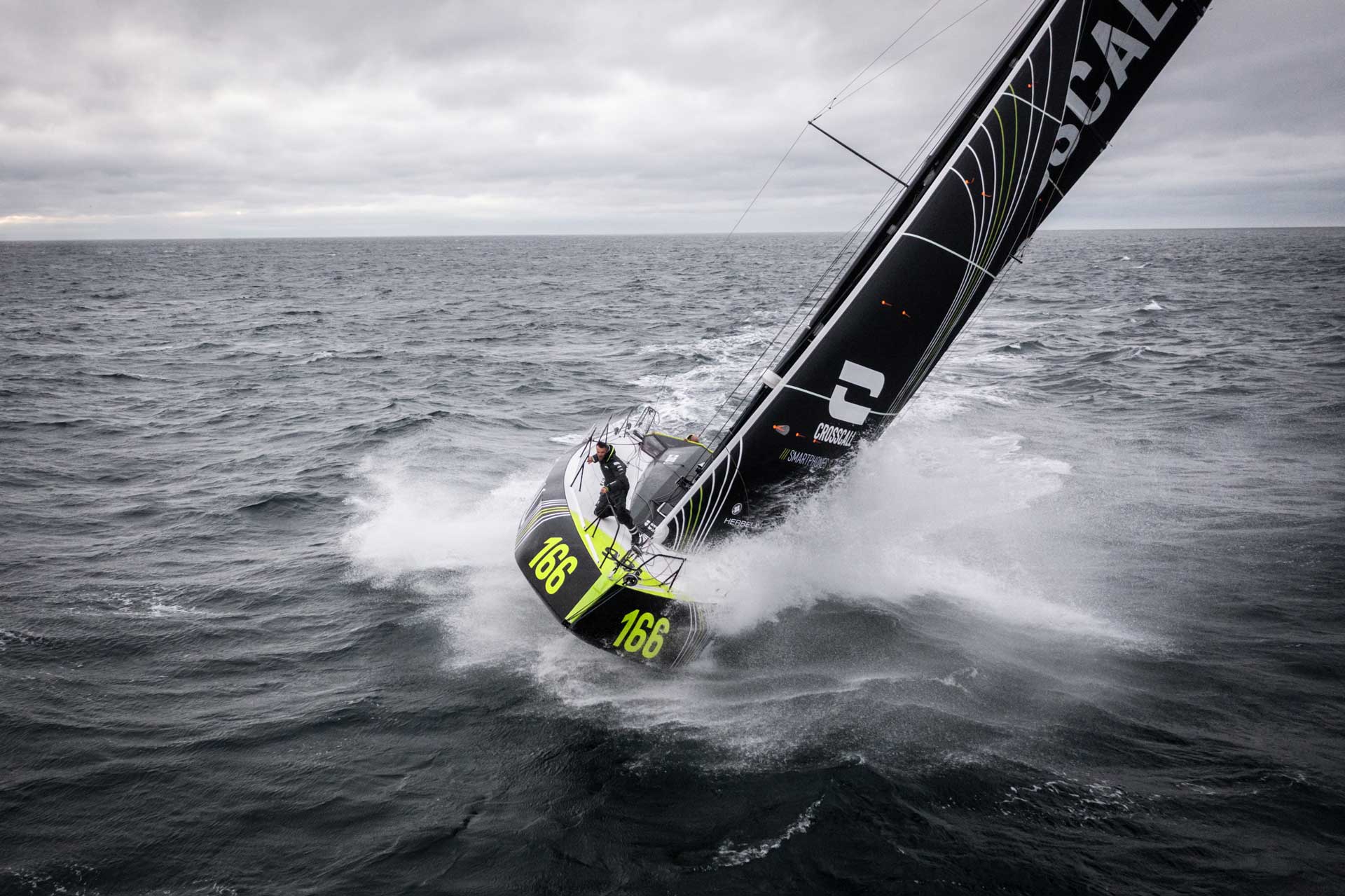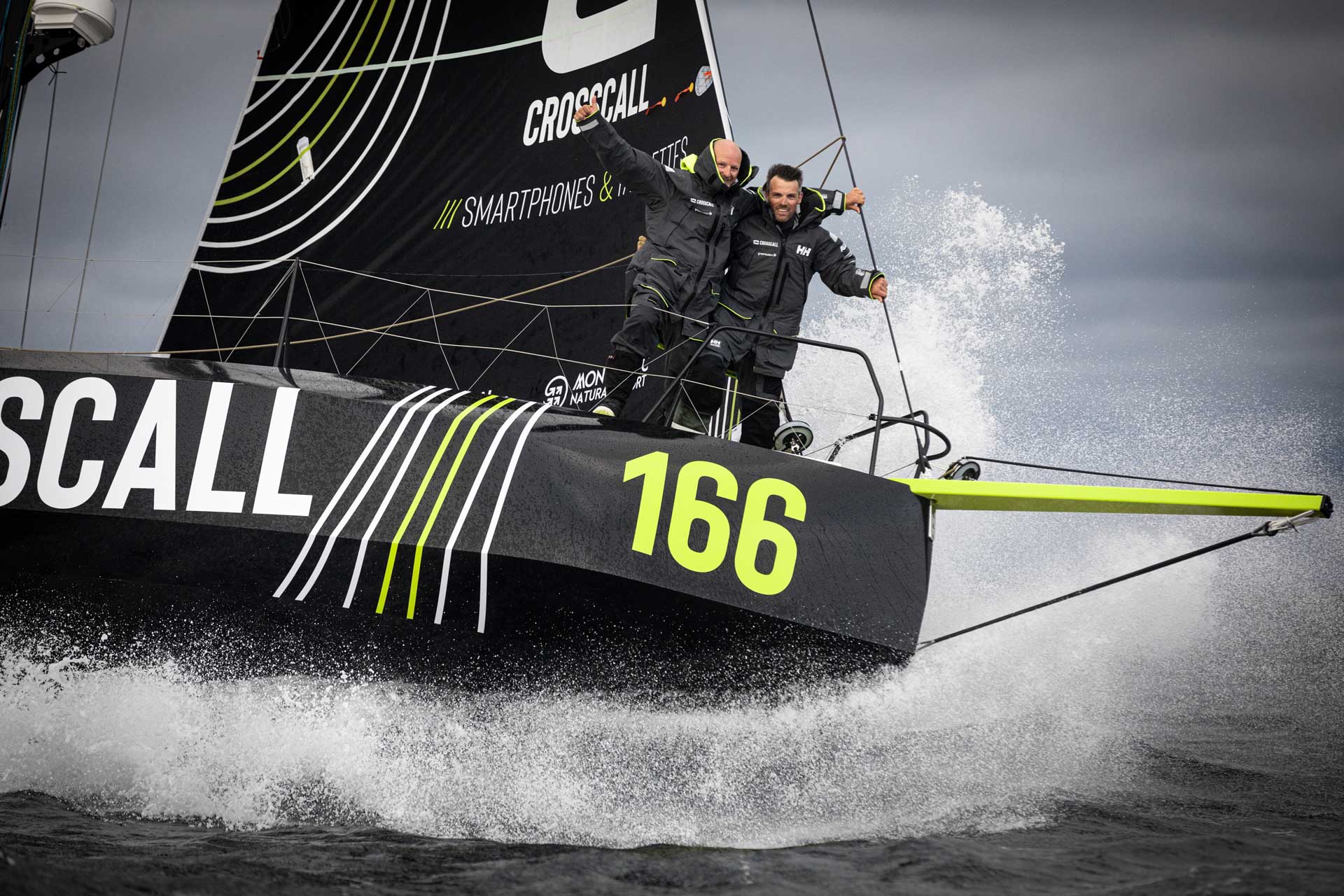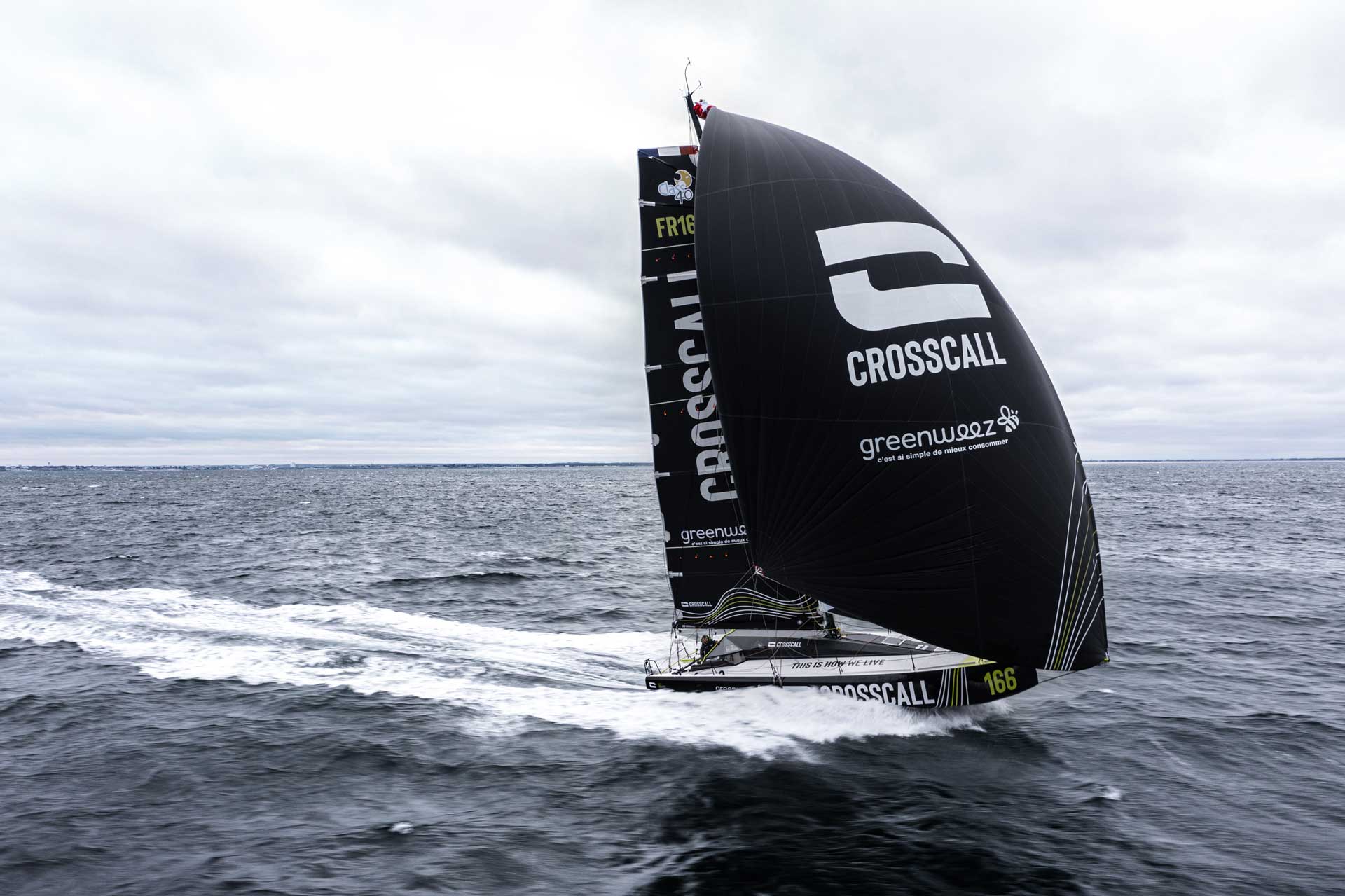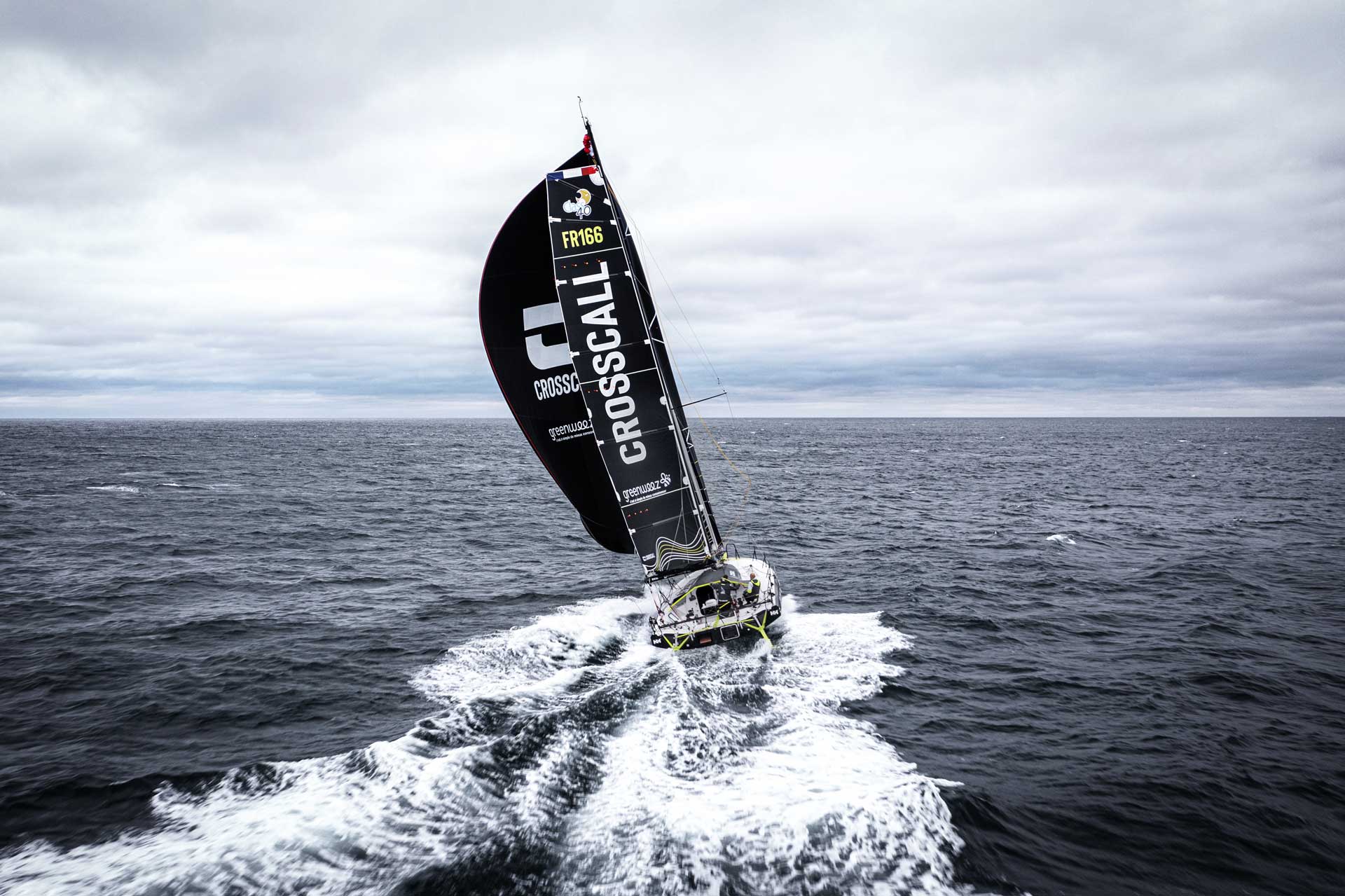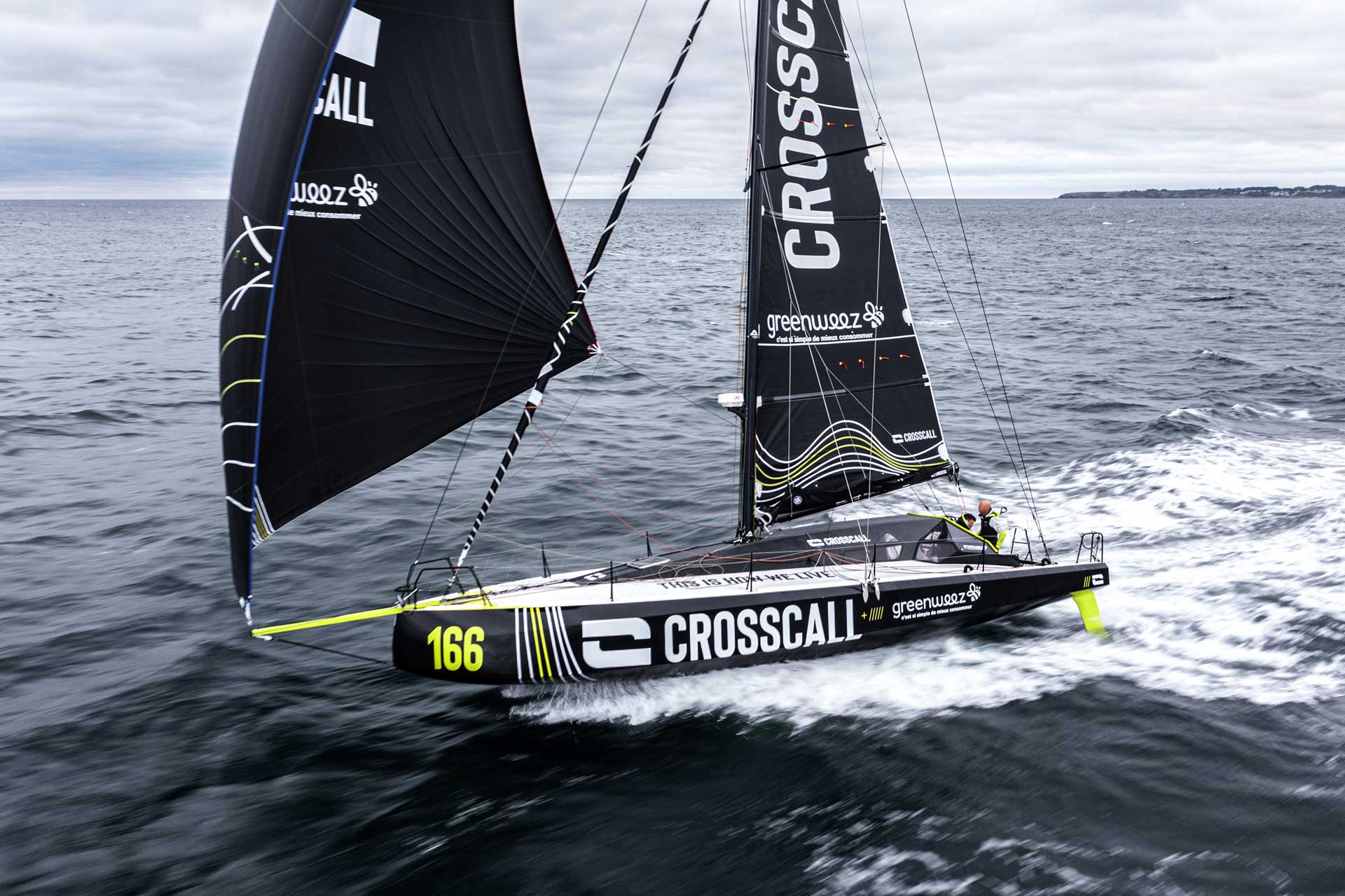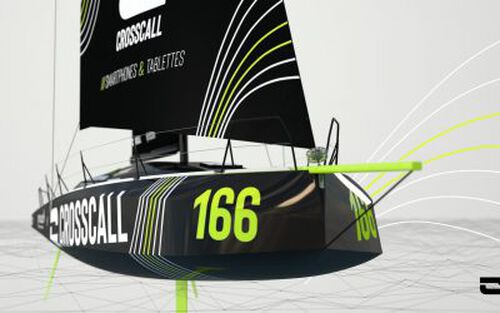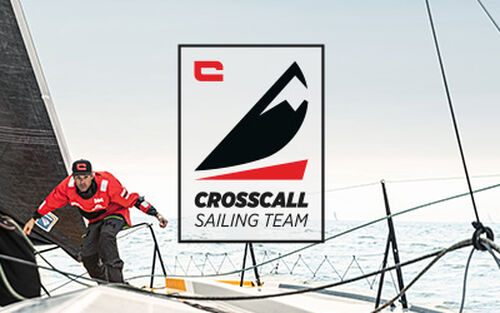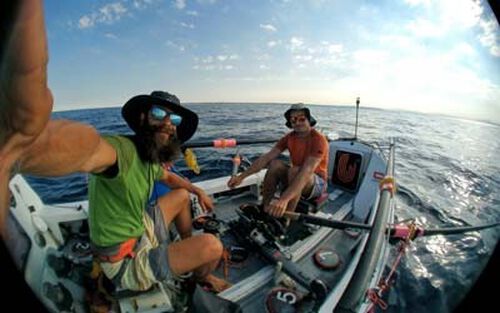WHAT HAPPENED BETWEEN THE LAUNCH AND THE START OF THE FIRST RACE?
Aurélien: It was a real race against the clock, because there's a lot of work to be done between a boat that's launched in its bare state, i.e. a composite platform where no system has yet been installed, and a boat that's ready to set off for 15 days of racing. First of all, we carried out the first test sails by transporting the boat to Lorient. This allowed us to see what worked and what didn't. In the end, we did a lot more tinkering than sailing, but it was extremely important to sail in safe conditions. To date, the boat's performance is not yet optimal. There are systems we need to invent, and we need to understand the boat's stresses, friction and so on. We're now in the process of getting the boat up and running, in terms of electronics, all the bits and pieces, and on-board ergonomics.
20 days on a prototype boat is a very, very, very short time to consider a race like Les Sables-Horta. It was a big job for Marius, the Crosscall Sailing Team préparateur, who didn't sleep much, and for Lili, our "boutologue", in charge of the boat's seamanship. We finally measured the boat with 3 days to go, which meant dismantling the entire boat and then reassembling it.
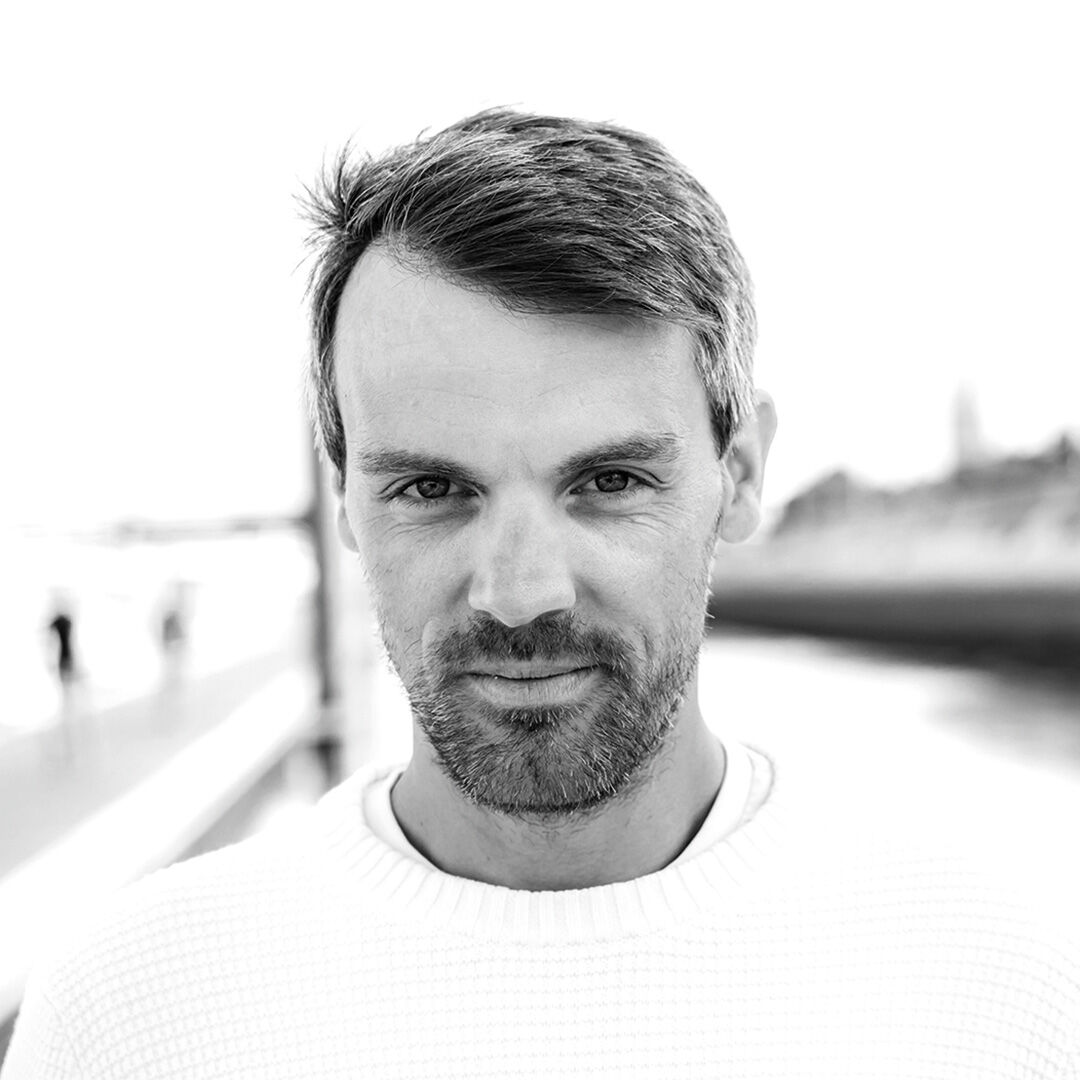
"It was a race against the clock, but at the same time it was super motivating!"
Aurélien Ducroz, skipper Class40 Crosscall
HOW DID IT FEEL TO SAIL FOR THE FIRST TIME?
Aurélien: The first sensations of sailing are very good, and the behavior of the Class40 Crosscall is very good at the helm. We saw a lot on the delivery trip, pulling the boat as hard as we could. Even if a few levers are still missing, the boat remains easy to handle, even in strong positions and conditions. We've started to discover the boat's major strengths, and she's already reached speeds of over 20 knots!
David: It's reassuring to have been able to sail in the breeze before a race where we're leaving far from the coast. We've only had the boat in the water for a very short time, so it's great to have been able to sail in up to 30 knots of wind, hit a few waves upwind, put some load on the sheets and rudders, and see that structurally nothing has moved.
WHAT ARE YOUR OBJECTIVES FOR THIS FIRST RACE?
Aurélien: Taking the start of the race closes the chapter on construction and preparation. It feels good, it's a real boost! We haven't slept much in two months. Nobody thought we'd be here, and here we are! Now there's a huge amount of work to do in terms of developing and understanding the boat. That's what these 12 days of racing are all about, and it's going to be great.
David: We're starting out quite humble. It's going to take time to understand how the boat works. We're working on a very innovative hull, and we're going to have to find out how to operate it. It's already a great achievement to be at the start of the race, and that's the goal we set ourselves, because there's no substitute for more than 2,000 miles in contact with other boats, to come back with great sensations, to get to grips with it and come back with some answers. Given the line-up, we know that whatever happens, we'll have good boats and good competitors around us to measure ourselves against.
FIRST IMAGES OF CLASS40 CROSSCALL UNDERWAY
PHOTO GALLERY
THE CROSSCALL SAILING TEAM WEBSERIES
In a web series entitled " Winning through innovation and sustainability ", the Crosscall Sailing Team and Aurélien Ducroz look back on every stage of the project that will lead them to the Route du Rhum 2022.
PROJECT PARTNERS
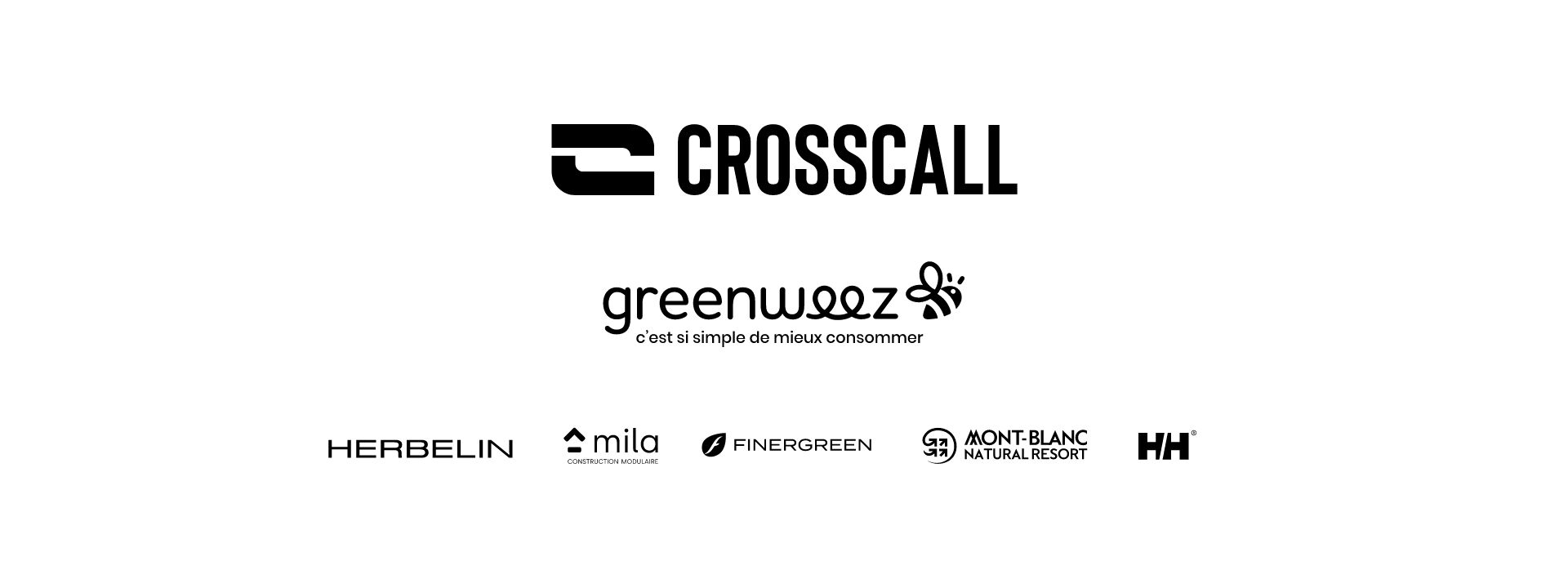
 Choisissez votre pays et votre langue
Choisissez votre pays et votre langue
